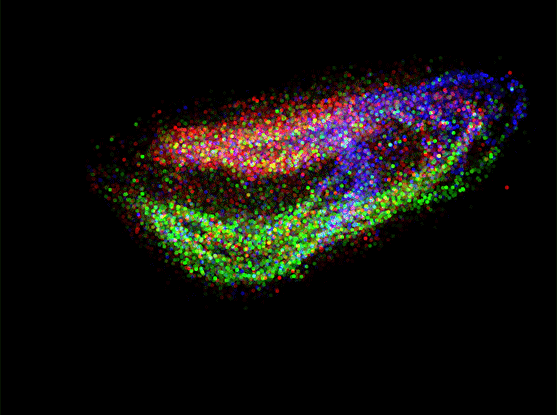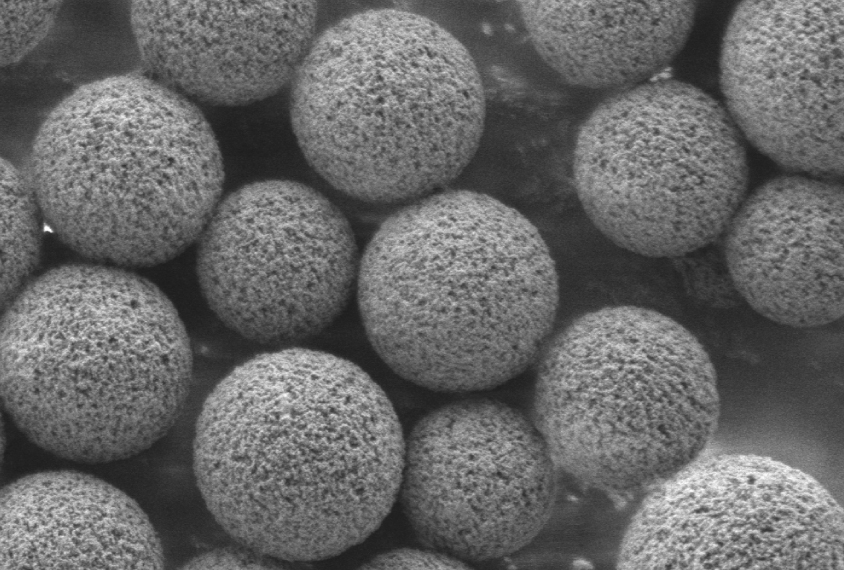
New method yields maps of gene expression in multiple dimensions
An array of minute beads enables researchers to build precise maps of gene expression in the brain.
An array of minute beads enables researchers to build precise 3-D maps of gene expression in the brain1. The technique, called Slide-seq, can help researchers compare gene expression in the brain of an autistic person with that of a neurotypical person.
Scientists usually map gene expression by analyzing messenger RNA (mRNA), the intermediary between DNA and protein. Existing methods of doing this in intact tissue, however, are time-consuming and yield low-resolution maps.
Slide-seq is fast, simple and precise, pinning down mRNA location to an area 10 micrometers across, less than the width of some neurons.
It is a twist on a technique called Drop-seq, in which mRNA from individual cells sticks to short strands of DNA on tiny beads. The strands act as a barcode that connects each mRNA to the cell it came from. In Drop-seq, the beads travel down grooves etched in a glass chip.
Slide-seq involves the same beads, but the beads are laid out in arrays — preserving spatial information in a tissue.
The researchers sliced tissue from a mouse brain, kidney and liver into thin sheets. They laid these sheets onto the bead arrays and placed them into a saline solution. The saline releases mRNA from the tissue, which then binds to the DNA strands on the beads.
The researchers sequenced the mRNA and used a custom algorithm to translate the beads’ barcodes into spatial information. They then used existing datasets of single-cell mRNA sequences to determine which cell types the beads had captured.
The team used the technique to map the location of various cell types in the mouse tissues. They also identified gene-expression changes in neurons and glia that occur over hours to weeks in mouse brains damaged by a traumatic injury. The work appeared in Science in March.
The bead setup and accompanying computer files are available by request.

References:
- Rodriques S.G. et al. Science 363,1463-1467 (2019) PubMed
Recommended reading

Developmental delay patterns differ with diagnosis; and more

Split gene therapy delivers promise in mice modeling Dravet syndrome

Changes in autism scores across childhood differ between girls and boys
Explore more from The Transmitter

Smell studies often use unnaturally high odor concentrations, analysis reveals

‘Natural Neuroscience: Toward a Systems Neuroscience of Natural Behaviors,’ an excerpt
